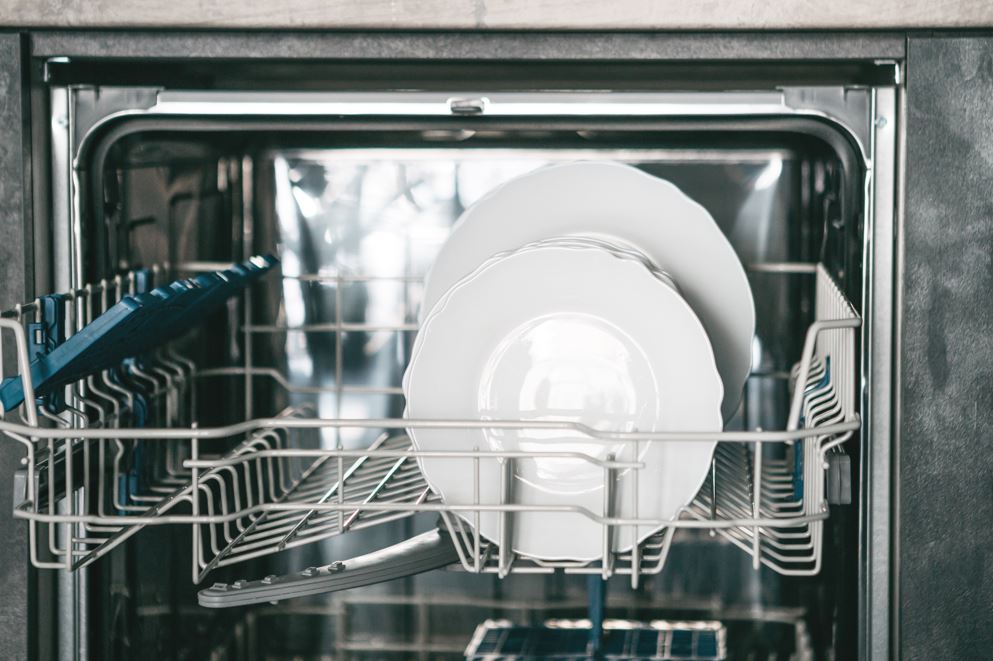One cannot measure the value of a dishwasher in a household by simple means. Right from its creation, it has relentlessly continued to support humans with one of the most tiring chores, which is the washing of our dirty dishes.

A dishwasher dramatically reduces the effort you need to put into such a task and even saves much water and energy compared to cleaning dishes by hand. But just because it is such a magnificent machine does not mean it will be easy to use.
If you do not operate it properly, you might not be able to start the appliance or encounter difficulties later. You can also receive faulty or subpar performance and think it is your dishwasher’s fault when it is just not being utilised correctly.
But do not worry, you are not alone; different people have varied opinions on running a dishwasher. So if you too wish to know how to use a dishwasher, read ahead to discover the best way.
How To Use Dishwasher
Pre-rinse Is Not Mandatory
You might have heard that it is better to rinse your dishes first, even barely, before putting them in dishwashers, but honestly, you might not have to go with that extra step. Do it only if you plan to leave the dishes in the washer for a very long time, as otherwise, they would risk smelling bad.
But if you run a water cycle right away, then you do not have to pre-rinse and can just scrape off food bits before putting it in the dishwasher.
Separate The Dishes Accordingly
Depending on what you use, you might have to keep some dishes separate from others before using your washer. For instance, if you keep stainless steel dishes with silver, then they can damage each other.
You must refrain from stacking your dishes together, as the spray will not be able to reach all corners and clean anything properly.
Load the Top Rack with Suitable Dishes
The top racks should only house fragile items like bowls, cups, wine glasses, etc, but you can also put small plates in between. Other than that, you can put ladles and cutleries if the top rack has a placeholder for them, or just arrange them as it is.
Place the glasses between the tines and provide ample space between them, as glasses wedged over two tines can break. This also goes for wine glasses, and ensure they sit securely in their place at the top rack.
Nowadays, dishwashers even have special compartments for glassware, so if that is the case with your product, you do not need to worry about that part.
Load the Bottom Rack with Suitable Dishes
Now the bottom rack is for more sturdy dishes like large dinner plates, baking dishes, pots and pans, etc.
It is better to position the flat pans and platters at the end of the dishwasher because, at the front, they can block the dispenser and stop detergent from reaching the other dishes.
Load the Detergent
You can easily find the detergent dispenser at the bottom of the dishwasher door, but this place can vary for different models of dishwashers. After locating the dispenser, choose the correct detergent, which can be powders or liquids.
Select the correct dosage of your detergent according to the label and make sure that the dosage is appropriate, as adding more or less will not positively affect the outcome.
Now place the detergent inside the detergent dispenser, close the lid and shut it firmly. In the meantime, try not to use dish soap in the dispenser, even if you do not have detergent present at the moment. It can create heavy foam that can overflow the dishwasher compartment.
Choose Light or Heavy Cycles
If you have fewer dishes or dishes that are mostly clean, it is best to use a light water cycle to run. This will make the dishwasher operate more effectively, and it will also waste less water.
Shorter programs ranging from 30-50 mins should be ample for a good cleaning.
Now for extremely dirty dishes with stubborn oil stains or similar grime, you need to use an intense water cycle that can wash the dishes adequately.
Select The Dry Program
If you need the dishes right away, then you can opt for a drying option, as many new dishwashers even give the choice of steam drying for a more hygienic experience. But if you can spare time, leave the dishes for air drying.
See also: Best Dishwasher for Indian cooking
Certain Tips and Warnings
- It is best to put special care while loading plastic items inside the dishwasher as they can get displaced quickly due to their lightweight.
- Even though dishwashers can clean most materials, do not use utensils made of copper, gold, or aluminium, as they can get discoloured.
- Do not use nonstick cooking materials if they are not dishwasher-safe.
- Do not use non-heat-resistant plastic vessels as well.
- Lastly, do not overload your dishwasher and make it bear more than it can handle. This practice can severely damage the machine and reduce its capacity to work optimally.
Wrapping It Up
On that note, we wrap up this informative article on how to use a dishwasher. Now follow these steps, and start utilising your dishwasher like a pro without sweating about the complications or intricacies of this very helpful appliance.
